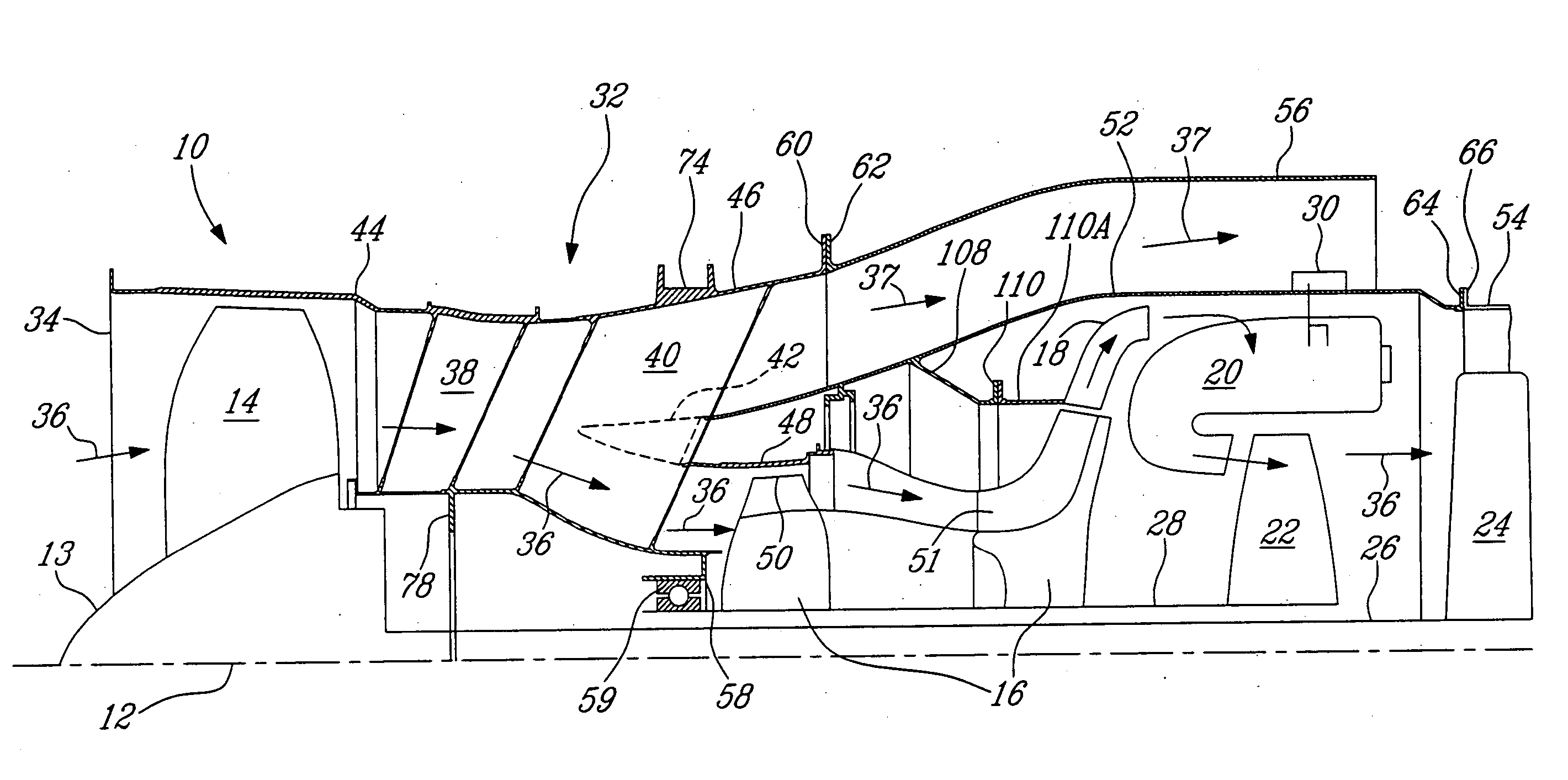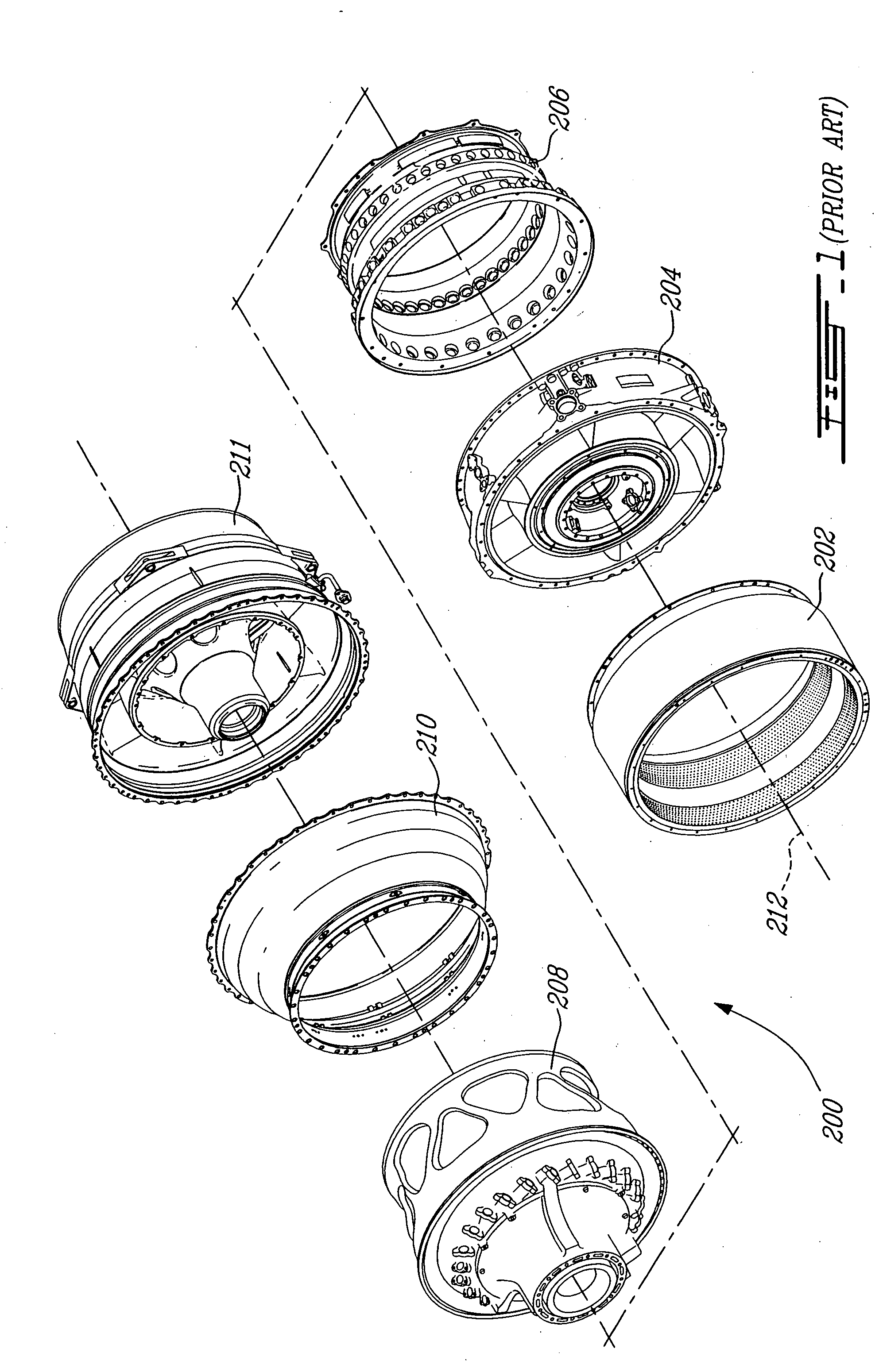Turbofan case and method of making
a turbofan engine and case technology, applied in the field of turbofan case, can solve the problems of reducing the clearance of the blade tip, unable to meet the key deliverables required for such a market to be realized, and unable to meet the key deliverable requirements of such a market, so as to reduce the number of flange connections, reduce the accumulation of tolerances in the assembly, and reduce the number of blade tips
- Summary
- Abstract
- Description
- Claims
- Application Information
AI Technical Summary
Benefits of technology
Problems solved by technology
Method used
Image
Examples
Embodiment Construction
[0029] Referring to the drawings, beginning with FIG. 3, an exemplary turbofan gas turbine engine 10 according to the present invention includes in serial flow communication about a longitudinal central axis 12, a fan assembly 13 having a plurality of circumferentially spaced fan blades 14, a compressor section 16 having a plurality of circumferentially spaced low pressure compressor (LPC) blades 50 and high pressure compressor (HPC) blades 51, a diffuser 18, a combustor 20, a high pressure turbine (HPT) 22, and a low pressure turbine (LPT) 24. LPT 24 is connected to the fan assembly 13 by a first or low pressure (LP) shaft 26, and HPT 22 is connected to compressor assembly 16 by a second or high pressure (HP) shaft 28. Fuel injecting means 30 are provided for injecting fuel into the combustor 20
[0030] A generally tubular casing assembly 32 having a envelops the engine 10 and thereby defines a main flow path 36 through the core of engine 10, extending from an inlet 34 to an exhaust ...
PUM
 Login to View More
Login to View More Abstract
Description
Claims
Application Information
 Login to View More
Login to View More - R&D
- Intellectual Property
- Life Sciences
- Materials
- Tech Scout
- Unparalleled Data Quality
- Higher Quality Content
- 60% Fewer Hallucinations
Browse by: Latest US Patents, China's latest patents, Technical Efficacy Thesaurus, Application Domain, Technology Topic, Popular Technical Reports.
© 2025 PatSnap. All rights reserved.Legal|Privacy policy|Modern Slavery Act Transparency Statement|Sitemap|About US| Contact US: help@patsnap.com



